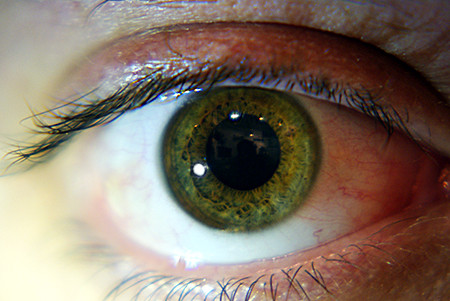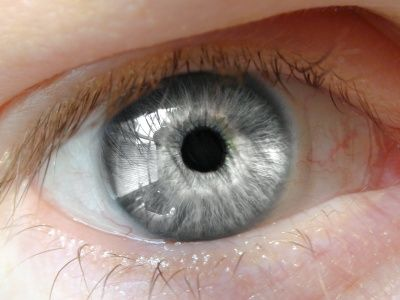Eye Color
No two people have the exact same eye color. Scientists have found gene combinations that produce a wide continuum of eye color, from the lightest blue to darkest brown.
Genes ultimately decide eye color, although there are other factors that influence eye color. Certain colors can be more common in certain geographic locations. Blue eyes are found in about 70 percent of northern European where the UV rays are less harsh, while Africa consists of almost entirely brown eyes.
Looking at the entire globe, Europe holds the most diversity in eye color. Although all of the diversity will eventually disappear because brown eyes possess a dominant gene. Meaning if a blue eyed father and a brown eyed mother had a child, there is a significantly greater chance the child will have brown eyes.
All other eye colors are recessive meaning two recessive parents are needed to maintain eye color diversity. Less and less people are representing colors other than brown. Eventually all other eye colors will fall to the dominance of brown.

Brown eyes are the most common color at about 60%. They are also the only color to have a dominant gene. Nearly everyone from Africa and Asia has brown eyes.

Blue eyes, being genetically recessive, are much less common worldwide. Blue eyes occur occur from an absence of pigment in the eye. Common in northern Europe an estimated 15% of people have blue eyes.

Hazel eyes are similar to brown eyes, although typically lighter in color and have a green yellow tint. A trait unique to hazel eyes is a higher concentration of pigment around the border. The varying pigments results in multi-colored appearance depending on lighting. An estimated 6-10% of people have hazel eyes and can be found all over the world.

Green eyes are often confused with hazel, yet are separate and distinct. Only about 2% of the world population has green eyes. The green eye color is a result of a mild amount of pigmentation in the eye, alongside a golden tint. This rare color can be found in Northern and Central Europe but can also be found in western Asian cultures on rare occasion. Surveys also show that green eyes are found to be the most attractive.

Silver eye color is also quite rare although many consider silver eyes a variation of blue eye color. Similar to blue eyes, silver eyes are a result of very low pigmentation in the eye. The absence of pigmentation reflects a grey silver appearance. This rare color is most common in European countries.

Amber eyes show off a yellow-copper tone, which results from a rare yellow colored pigment. Amber eyes are one of the least common worldwide. The only places with a percentage of the color are Asia and South America.
People need to remember that all eyes are uniquely beautiful regardless of pigment concentration.










